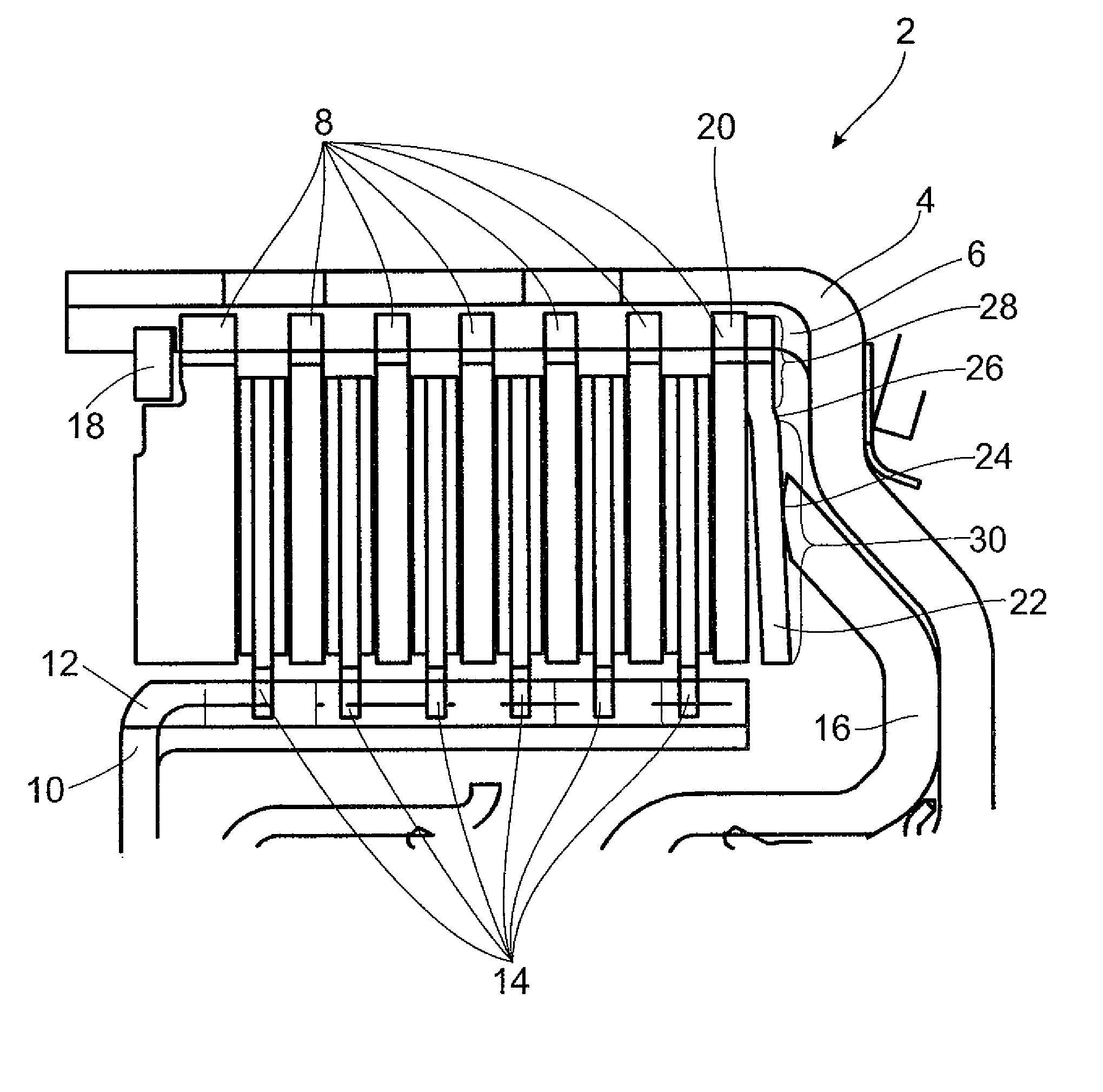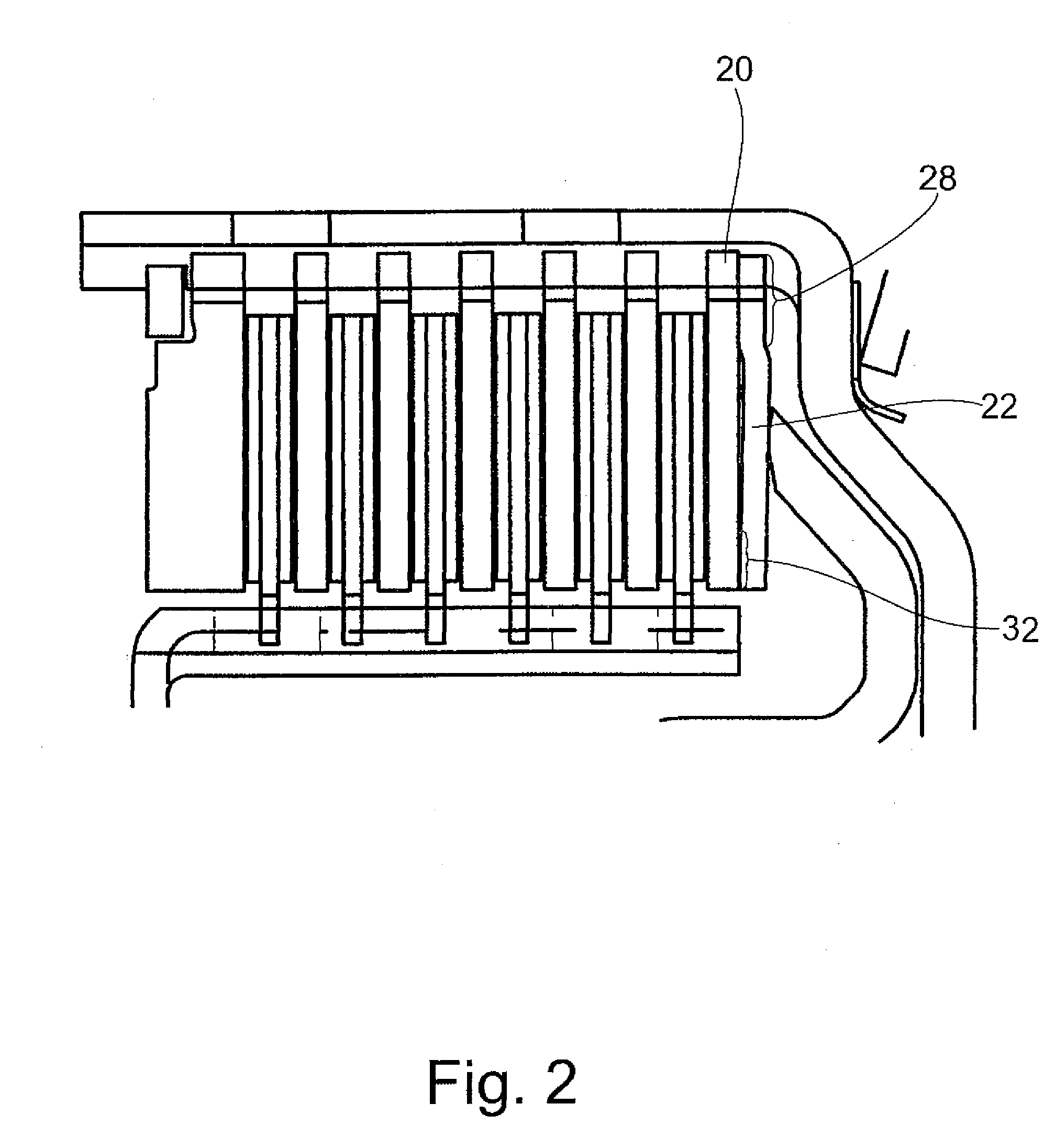Multiple-disk clutch with resilient element
a multi-disk, resilient element technology, applied in the direction of fluid-actuated clutches, clutches, non-mechanical actuated clutches, etc., can solve the problems of uneven pressing distribution, jerking of the vehicle or shaking during starting, etc., to improve the application of force and improve the pressing distribution
- Summary
- Abstract
- Description
- Claims
- Application Information
AI Technical Summary
Benefits of technology
Problems solved by technology
Method used
Image
Examples
Embodiment Construction
[0037]FIG. 1 shows a multiple-disk clutch 2 with an outer disk carrier 4 which has, at the inner circumferential surface, a spline profile 6 in which the outer disks 8 are arranged so as to be fixed with respect to rotation relative to it but so as to be displaceable axially. The inner disk carrier 10 has, at the outer circumferential surface, a spline profile 12 in which the inner disks 14 are arranged so as to be fixed with respect to rotation relative to it but so as to be displaceable axially. The inner disks 14 are constructed in this instance as faced disks and the outer disks 8 are constructed as steel disks. However, the reverse could also be possible. The actuator 16 is constructed as an axially displaceable piston. The disk stack is supported axially by an axial securing device in the form of a snap ring 18, which is held in a groove in the outer disk carrier 4. The end disk supported at the snap ring 18 is thicker than the other outer disks 8 to prevent bending. A resilie...
PUM
 Login to View More
Login to View More Abstract
Description
Claims
Application Information
 Login to View More
Login to View More - R&D
- Intellectual Property
- Life Sciences
- Materials
- Tech Scout
- Unparalleled Data Quality
- Higher Quality Content
- 60% Fewer Hallucinations
Browse by: Latest US Patents, China's latest patents, Technical Efficacy Thesaurus, Application Domain, Technology Topic, Popular Technical Reports.
© 2025 PatSnap. All rights reserved.Legal|Privacy policy|Modern Slavery Act Transparency Statement|Sitemap|About US| Contact US: help@patsnap.com



